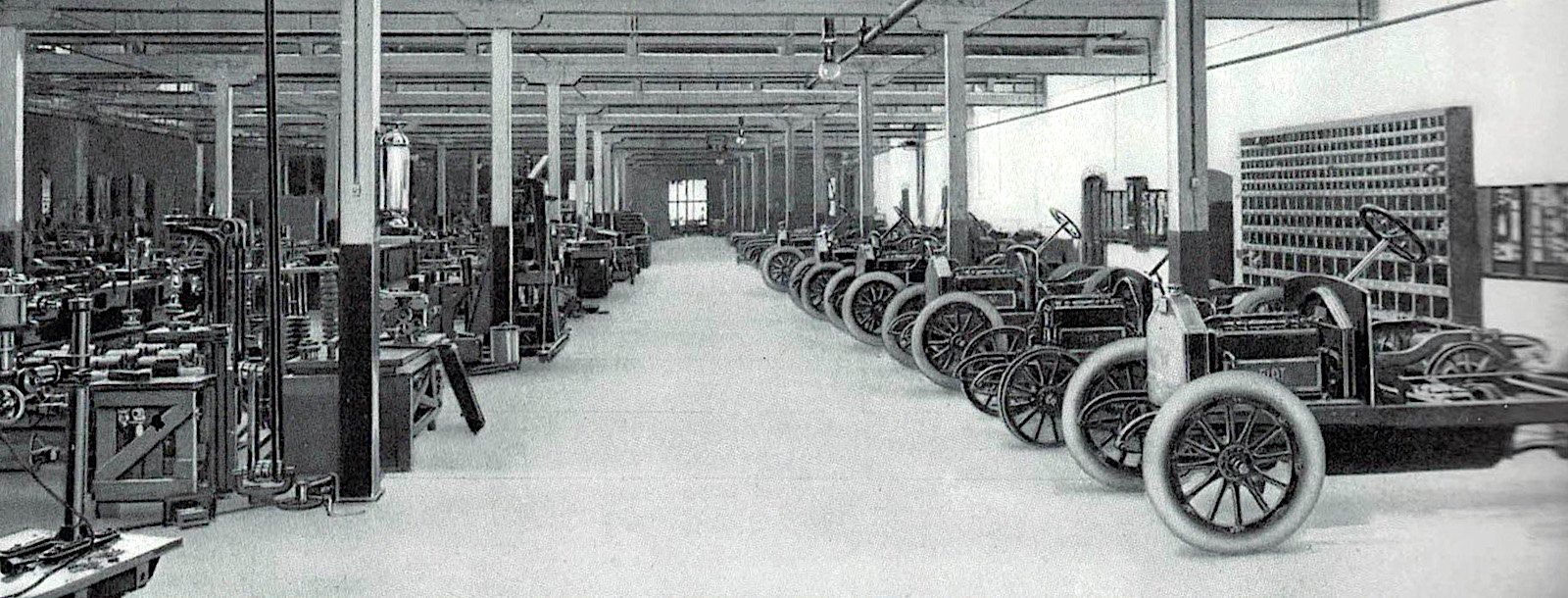For a brief spell, Fiat built cars in America
A Fiat built in front of the automaker’s Poughkeepsie, N.Y. factory.
While many remember that Daimler was the first European automaker to build cars in America, few remember that for nearly a decade, so did Fiat.
HAGERTY.COM | MAY 22, 2018
When you consider that the European Union slaps a 10-percent tariff on U.S.-built cars, the United States’ 2.5-percent tariff on cars assembled in Europe seems meager, although there is a 25-percent tariff on all imported vans and pickups. Of course, higher tariffs on European auto imports were proposed in March, and should they be imposed, it wouldn’t be the first time that stiffer fees have been levied on forgein cars. In the early 20th century, cars imported from Europe faced a 45-percent tariff, and foreign automakers had to start planning for manufacturing in the U.S.
At that point in time, automobiles were still considered a plaything for the wealthy, and they were built and priced accordingly. Fiat (an acronym for Fabbrica Italiana Automobili Torino, or Italian Car Factory of Turin) was no different. Today, the company is known for diminutive, affordably-priced cars like the 500 and 500X crossover. A century ago, it was quite the opposite; Fiat built large luxurious touring cars and limousines.
Agnelli takes a leap
Giovanni Agnelli, great-great grandfather of Fiat Chrysler’s current chairman John Elkan, founded the automaker in Turin, Italy, in 1899. Within a few years, Hollander and Tangeman of New York City were importing Fiats to the U.S., selling to such customers like August Anheuser Busch Sr. of the St. Louis brewing company that wears his name. Despite Hollander and Tangeman’s success—or perhaps because of it—their contract was abruptly canceled in 1909 when Agnelli inaugurated a manufacturing site in the U.S.
But Agnelli wasn’t the first to make such a move.
Piano magnate William Steinway established Daimler Motor Company in 1888 in Hartford, Connecticut, to build Daimler motors under license. When Steinway died eight years later, the company was reorganized as the Daimler Manufacturing Company and moved to Long Island, New York, where it built the 45-horsepower Mercedes from 1905–07. When a fire leveled the factory, American production ended until 1997, when the German automaker opened a factory in Tuscaloosa, Alabama.
Still, it was unusual for a European company like Fiat to establish an American factory at that time. The move was welcomed by Wall Street, which financed the American Fiat Automobile Company in 1909 and inexplicably installed diamond merchant Ben Eichberg as its president. Thankfully, other top officers had automobile experience at firms such as Pope-Toledo, Lozier, and Thomas. Also, Fiat treasurer John Treas was on the board of The Horseless Age magazine, so good coverage was assured. The company’s cars were designed in Turin and built in Poughkeepsie, New York, with royalties paid to its Italian relative on each car sold.
Inside Fiat’s American factory, the company’s first foreign plant.
Fiat puts down roots in Poughkeepsie
By spring 1910, a Mediterranean-styled factory, sheathed in stucco and capped with a terracotta tiled roof, opened in Poughkeepsie. The first vehicle rolled off the line that September, at which point it was test driven through the streets, although it was merely a stripped chassis, according to a contemporary report in The Poughkeepsie Daily Eagle.
The factory exclusively built large cars that competed with the finest brands of the time, such as Peerless and Pierce-Arrow. Prices ranged from $4000 to $6100; that’s $101,900 to $155,340 when adjusted for inflation.
Initially, the company offered the 30-hp four-cylinder Type 54 with a 124-inch wheelbase. The Type 56, a seven-passenger Touring car made exclusively for the U.S. market, followed in 1912. Boasting a 135-inch wheelbase, it was powered by a massive 8.6-liter L-head six-cylinder engine that produced 45 hp. It was mated to an unsynchronized four-speed manual transmission and rear mechanical drum brakes. The 42-hp four-cylinder Type 55 with a 128-inch wheelbase arrived for 1913, followed by the 25-hp four-cylinder Type 53 with a 116-inch wheelbase a year later. With four models available, 1914 would prove to be the brand’s early highpoint in the U.S.
Fall from grace
In 1915, The Type 54 was dropped, followed by the Type 53 in 1916. That same year saw company officials travel to Turin, returning late in the year with plans to build a new medium-priced model, one that would sell for a more reasonable $2000 at the end of World War I, according to the industry publication Automobile Topics.
However, additional plant capacity proved necessary, “which the Italian owners are at present unable or unwilling to do,” the publication noted, adding that Fiat was highly profitable and expecting to expand internationally once the war ended. In 1917, Fiat in Italy took over the American operations, and the Type 55, now on a 140-inch wheelbase, became the sole offering until production ceased by year’s end—a corporate victim of World War I.
In February 1918, Chilton’s Automotive Industries and other publications reported that Duesenberg Motors of Elizabeth, New Jersey, had bought the factory’s machinery and building. The tooling was moved to Elizabeth to double Duesenberg’s plant capacity, which was then dedicated to building Bugatti aircraft engines. New equipment was to be installed at the Fiat plant by mid-1918, and company officials pledged to continue building cars in Poughkeepsie. But it was not to be.
While exact production numbers are not known, one local source estimated annual production at approximately 350 cars.
Today, American Fiats are rare, and while Fiats would be imported in greater numbers after World War II, the automaker wouldn’t produce cars in America until acquiring Chrysler from Cerberus in 2009.
The factory went on to house a number of businesses until being demolished in 1997 to make way for a shopping center, an ignoble end to a forgotten moment in automotive history.


